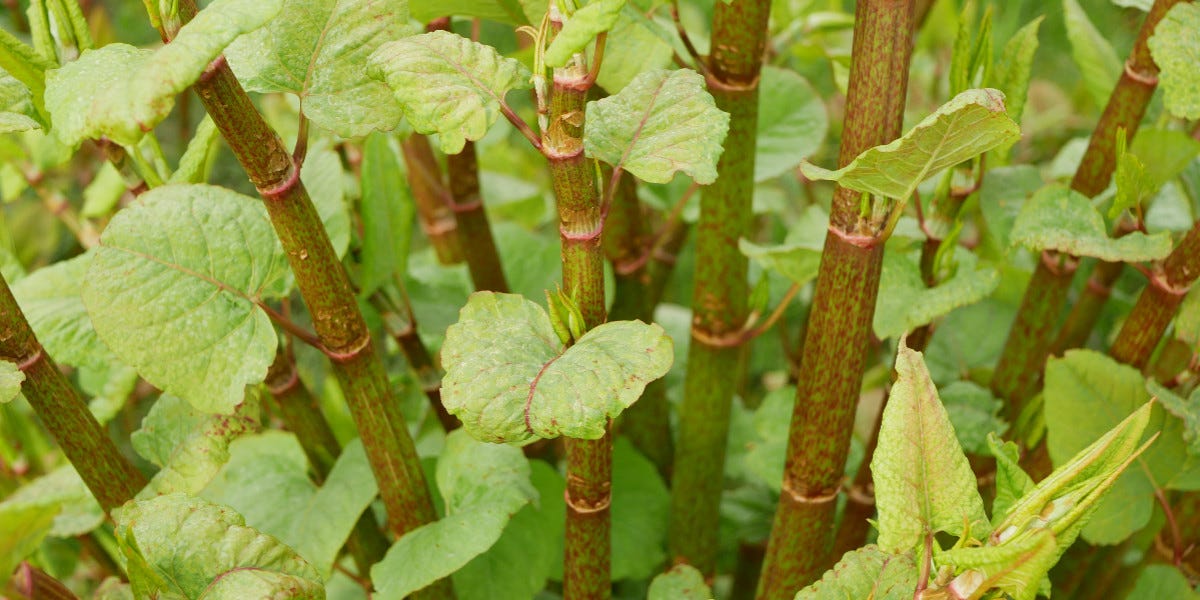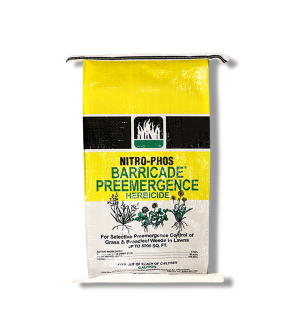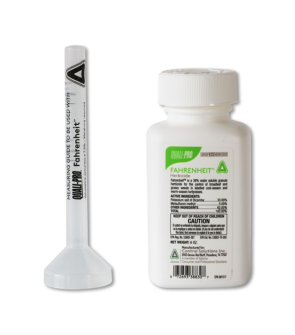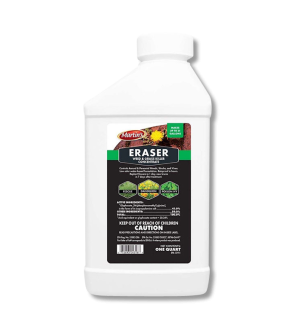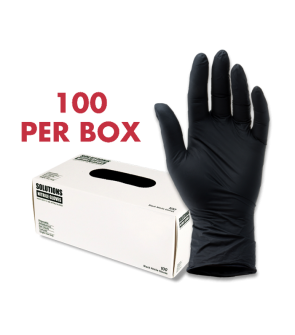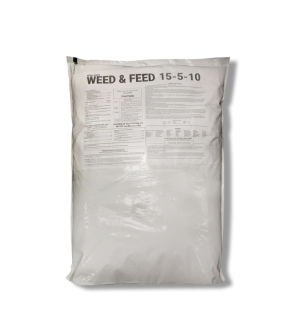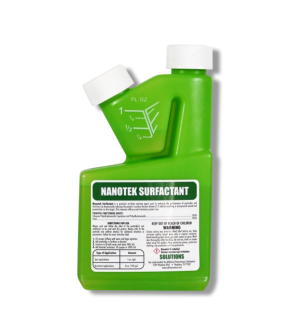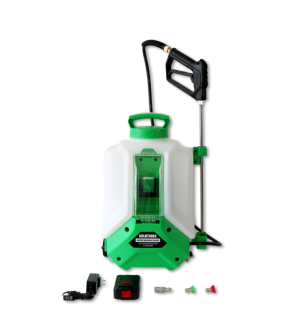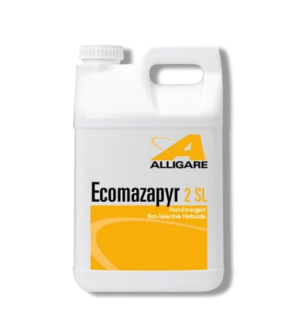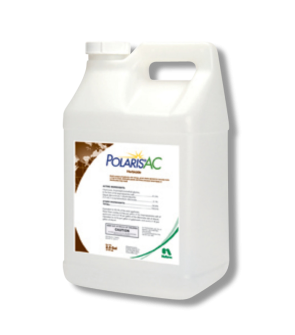Gain access to personalized product screening, the best pricing, rewards, and more!
Most Effective Products
Japanese Knotweed (Japanese Bamboo) Control: How to Get Rid of Japanese Knotweed (Japanese Bamboo)
This page is a general DIY guide for controlling Japanese bamboo. Using the products and methods suggested, you will get control of Japanese bamboo. Follow this DIY article and use the recommended products; we guarantee 100% control of Japanese bamboo.
Nope, Japanese bamboo isn’t real bamboo. Despite the nickname, it belongs to the knotweed and buckwheat family, not the grass family like real bamboo. Japanese bamboo, more accurately known as Japanese knotweed, Asian knotweed, fleece flower, or Mexican bamboo is one of the most aggressive and destructive invasive plants.
This invasive species spreads rapidly through underground rhizomes, allowing it to colonize large areas and regenerate from even tiny root fragments. It can grow through cracks in concrete, asphalt, and building foundations, causing serious structural damage that can reduce property values and complicate a structure foundation.
Additionally, the aggressive canopy and mat of leaves from Japanese bamboo block light from reaching the soil, making it nearly impossible for native or desirable plants to grow beneath or around it. It aggressively outcompetes desired foliage for space, sunlight, water, and nutrients.
Over time, this broadleaf plant leads to thinner turf, loss of desirable foliage, and potentially costly repairs in fences, foundations, sidewalks, and pavement if present in these sites. Getting rid of Japanese bamboo is notoriously difficult due to its deep, resilient rhizome system. However, with persistence and the right combination of products as suggested in our DIY guide, it can be controlled.
Identification
Before proceeding with a treatment program, you need to be certain that the weed infesting your property is Japanese bamboo. Careless identification can lead to using the wrong treatment methods, which can waste time and money. To know what Japanese bamboo looks like examine the following characteristics:
- Japanese bamboo is a fast-growing, invasive perennial plant that strongly resembles bamboo due to its tall, hollow, and jointed stems. This shrub-like plant typically grows between 6 to 10 feet and occasionally some parts of the foliage can reach 15 feet.
- The leaves are broad, heart- or shovel-shaped with pointed tips, and grow in an alternating pattern along the stems, giving the plant a dense, bushy appearance.
- From August to September, Japanese bamboo produces clusters of small, creamy-white flowers that emerge from where the leaves join the stems.
- Its roots, or rhizomes, are thick, woody, and orange inside, spreading aggressively underground and making the plant very difficult to eradicate. In spring, reddish-purple shoots emerge from the ground and quickly grow, while in winter, the above-ground canes die back and turn brown but often remain standing, creating a visible skeleton of the plant throughout the cold months.
Use the description and image above to help you properly identify Japanese bamboo on your property. If unsure, contact us and send a photo of your weed through email or in-person at one of our store locations so we can help you identify the weed and suggest treatment options.
Inspection
Once it is confirmed that you are dealing with Japanese bamboo, you can move on to inspection. During this phase, you will locate areas where Japanese bamboo thrives and observe the conditions allowing it to succeed. This information will help you in knowing where to focus your herbicide application.
Where to Inspect
Japanese bamboo commonly grows in areas where the soil has been disturbed or where it can take advantage of open, sunny conditions.
The most common sites where this weed tends to establish itself are roadsides and highways, woodland edges, meadows, streambanks, riverbanks, wetlands, vacant lots, and ditches. It can also spread and grow along the edges of driveways, patios, septic tanks, and water lines.
In residential and urban settings, you may even find this weed in gardens, turf, and along fences.
What to Look For
In late summer, usually from August through September, Japanese bamboo produces small, creamy-white flowers that grow in plume-like clusters along the upper portions of the stems. These flowers are not especially showy but become more visible as the plant matures.
During early spring, you might notice new shoots emerging from the ground. These look like reddish-purple asparagus spears and are smooth and fleshy when they first appear. As they grow, they become woody and resemble mature bamboo stems.
Another clear sign of Japanese bamboo is its rapid, aggressive growth. It spreads quickly, forming dense thickets that crowd out other vegetation.
Treatment
Before you begin any herbicide application, be sure to wear the proper personal protective equipment (PPE).
To get rid of Japanese bamboo, we recommend using herbicides containing glyphosate, triclopyr, 2,4-D, dicamba, imazapyr, or picloram.
The best time to treat Japanese bamboo is after it has flowered, typically in late summer to early fall between August and October. This timing is critical because the plant begins to move nutrients and energy from its leaves down into its extensive root system to prepare for winter dormancy.
When a herbicide is applied during this stage, it is more effectively drawn into the rhizomes, increasing the chances of long-term control and eradication.
Treating Japanese bamboo in spring is not recommended because the plant is in an early growth phase and not yet actively transporting nutrients or herbicides down into its root system.
In spring, Japanese bamboo focuses on pushing energy upward to fuel rapid shoot and leaf growth. If you apply a herbicide during this time, it may kill some of the above-ground foliage but won’t reach the rhizomes, which are the true source of the infestation.
Step 1: To Treat Dry Land

Determine how much herbicide to use by measuring the square footage of the treatment area. Find the square footage by measuring the treatment area's length and width in feet, then multiplying them together (length X width = square footage). For acreage, take the square footage and divide it by one acre (square footage / 43,560 sq. ft. = acres).
For treatments within turf, we recommend using a post-emergent herbicide.
Fahrenheit Herbicide is a selective post-emergent herbicide designed to control broadleaf and grassy weeds like knotweed in warm-season turfgrasses. It combines metsulfuron-methyl and dicamba for fast-acting, broad-spectrum weed control with minimal turf injury.
For spot treatments with Fahrenheit Herbicide, mix 0.2 oz. of product per 1 gallon of water to treat 1,000 sq. ft.
To enhance this product’s efficacy, mix in a surfactant like Nanotek. Nanotek is a non-herbicide product designed to improve the adhesion and penetration of pesticides onto treated surfaces.
Just add 1 fluid ounce of Nanotek per 1 gallon of solution.
To get rid of Japanese bamboo in cool-seasoned turf, we suggest using 2,4-D Amine Selective Post-Emergent Herbicide.
2,4-D Amine Selective Post-Emergent Herbicide is a broadleaf weed and brush killer commonly used on lawns, pastures, ornamental turf, and more to control nuisance weeds without harming most grasses.
For spot applications with 2,4-D Amine Selective Post-Emergent Herbicide, apply 1/4 pint of this product in 3 gallons of water.
Use a fan or cone spray pattern to ensure the leaves are fully coated, and spray the weed to the point of wet but not runoff. Be sure to spray on calm days when temperatures are not too hot and when wind speeds are low to minimize drift.
Conduct follow-up applications as necessary. Reapplication intervals with Fahrenheit Herbicide range from 4 to 6 weeks.
Reapplications with 2,4-D Amine Selective Post-Emergent Herbicide may be made 30 days after the first treatment.
Step 2: Concrete Areas and Ornamental Landscapes

Eraser 41% Glyphosate is a non-selective, post-emergent herbicide that kills weeds, grasses, and brush with the active ingredient glyphosate. It may be used on driveways, fence lines, roadsides, industrial sites, and other non-crop areas.
Additionally, it’s effective around trees, shrubs, and along the edges of garden beds, provided the product is applied carefully to avoid contact with desirable plants.
Keep in mind this product is non-selective meaning it will kill any plant that it comes into contact with.
For spot treatments, mix 2 1/2 oz (5 Tbs) of Eraser 41% Glyphosate per gallon of water to treat 300 sq. ft.
Adjust the sprayer nozzle to deliver a fine mist. Spray the top and bottom of the weed leaves until wet, but not to the point of runoff.
To better protect desired foliage, you can place a card board box between the weed and plant. The box acts as a physical barrier, shielding the plant from accidental overspray or drift.
Most treated weeds usually show initial symptoms in 2-4 days and complete kill in 1-2 weeks.
A second application may be required if the weed is not completely dead in 4 weeks.
Step 3: Aquatic Sites

Ecomazapyr 2 SL is a non-selective pre- and post-emergent herbicide that controls a wide range of weeds on both dry land and aquatic sites. It works by inhibiting plant growth, effectively preventing resprouting and weed competition in areas like forestry, rangeland, non-crop sites, and aquatic settings.
To get rid of Japanese bamboo in terrestrial sites, apply 4 to 6 pints of Ecomazapyr 2 SL per 100 gallons of water per acre.
For directed or spot spray applications, use 0.6 fl. oz. (0.5% concentration) to 6.5 fl. oz. (5% concentration) per 1 gallon of water.
Spray the portion of the Japanese bamboo above the water thoroughly, but not to the point of runoff.
This product does not control plants, which are completely submerged or have a majority of their foliage under water.
Do not treat more than one half of the surface area of the water in a single operation and wait at least 10 to 14 days between treatments.
Begin treatment along the shore and proceed outward in bands to allow aquatic organisms to move into untreated areas.
Prevention

- To prevent Japanese bamboo from growing in sites such as lawns and ornamental landscapes, apply a pre-emergent herbicide like Barricade Pre-Emergent Herbicide. Barricade Pre-Emergent Herbicide is a granular pre-emergent that prevents various broadleaf and grassy weeds like knotweed from emerging. Depending on your turf species, you may use anywhere from 1.5 to 4 pounds of Barricade per 1,000 sq. ft. For landscape ornamentals, the application rate will be between 2.5 and 5.94 lbs. of product per 1,000 sq. ft. You will need a handheld or push spreader to make applications. Walk at a steady pace while spreading the granules, ensuring an even distribution across the soil surface. After application, irrigate the treated area with 0.5 inches of water to activate the herbicide and help it penetrate the soil.
- If Japanese bamboo is spotted early, remove it promptly before it spreads. This can be done with physical labor such as tilling and toeing. However, you will need to dig into the soil to remove the leftover rhizomes. It can regrow from cut stems and roots so be sure to properly dispose of all plant material and not reuse it in lawn care.
- Maintaining healthy, dense vegetation within your property can help prevent Japanese bamboo from establishing. It struggles to compete in well-managed turf or robust native plantings. Regular applications with a slow-release fertilizer like Solutions 15-5-10 Weed & Feed Fertilizer with Trimec can achieve this. Solutions 15-5-10 Weed & Feed Fertilizer with Trimec is a granular lawn care product that combines a balanced fertilizer with Trimec herbicide to simultaneously nourish turf and control weeds like knotweed, dandelion, clover, and more. For general applications, you can distribute at a rate of 3.2 to 4.0 pounds of product per 1,000 square feet. If the grass is not moist at the time of application, sprinkle lightly with water to hold the material and prevent dust drift onto nontarget plants. Do not wash from weed leaves for 1 to 2 days after application. After this time has passed, a thorough watering should be made.
- Monitor your aquatic area and reapply Ecomazapyr 2 SL as new Japanese bamboo appears.
Key Takeaways
What is Japanese Bamboo?
- Japanese bamboo (Japanese knotweed) is an aggressive, invasive weed that is often mistaken for bamboo due to its appearance.
How to Get Rid of Japanese Bamboo
- Getting rid of Japanese bamboo (Japanese knotweed) will require the use of products such as Fahrenheit Herbicide, Alligare 2,4-D Amine Selective Post-Emergent, or Eraser 41% Glyphosate for sites on land. For aquatic control, it would be best to use Ecomazapyr 2 SL Herbicide.
Preventing Japanese Bamboo Reinfestation
- A combination of Barricade Pre-Emergent Herbicide and Solutions 15-5-10 Weed & Feed Fertilizer with Trimec will help to prevent Japanese bamboo (Japanese knotweed). Be sure to retreat with Ecomazapyr 2 SL in aquatic settings if new Japanese bamboo is seen.






